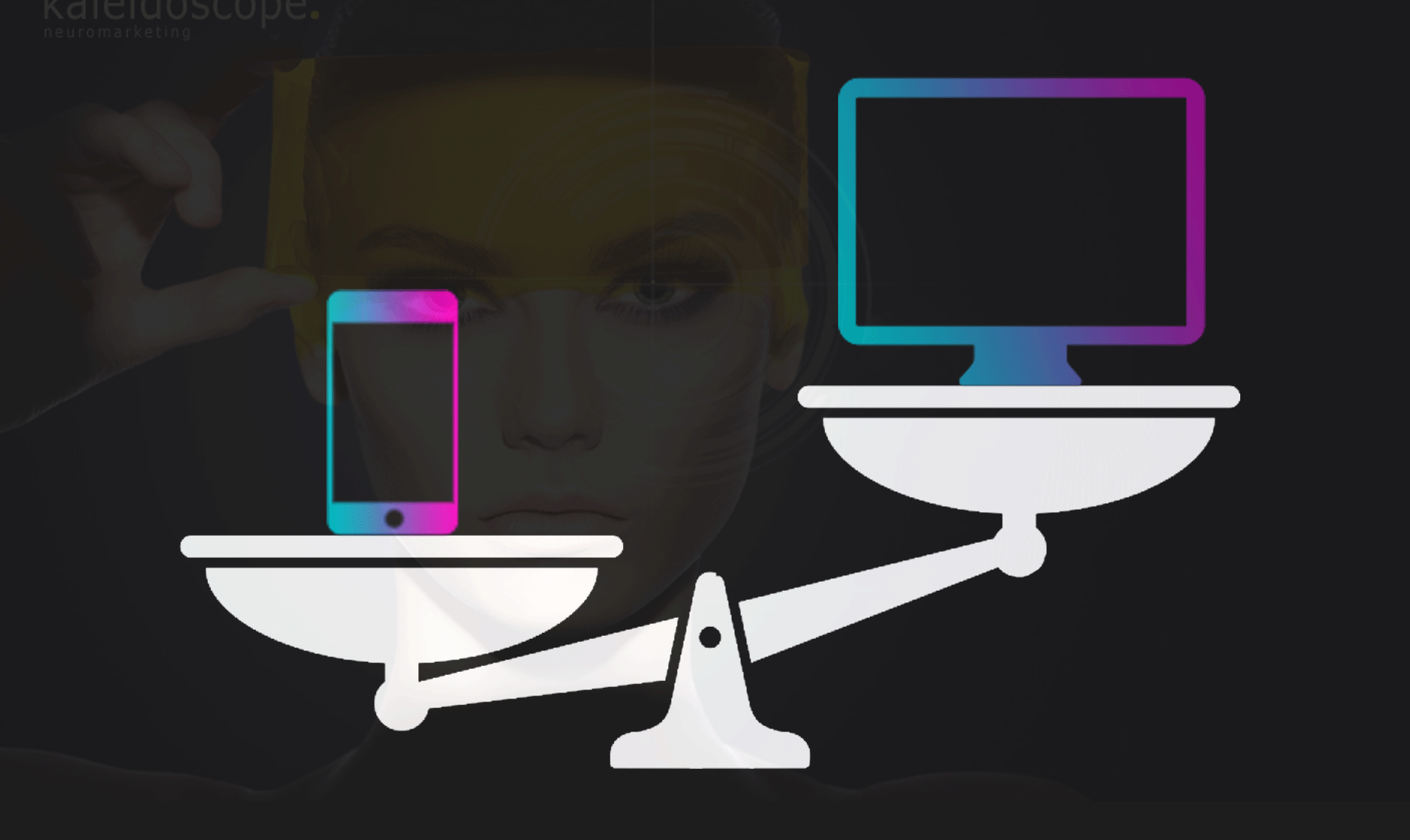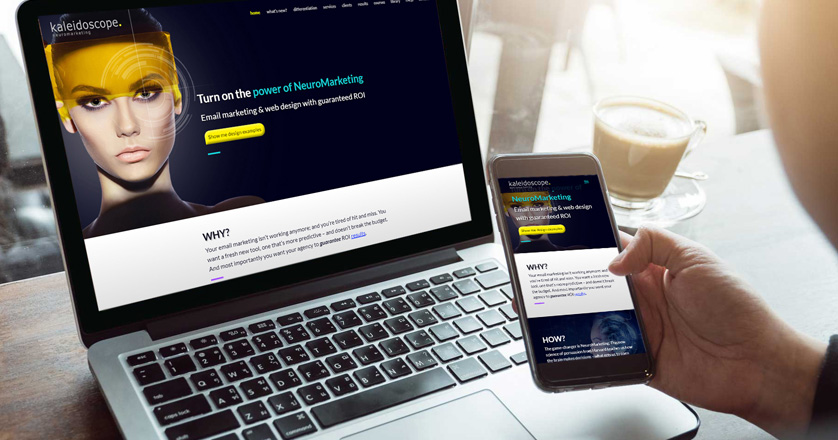NeuroMarketing – Mobile vs Desktop
“The big picture tells a thousand words – right?
But what do we do about mobile?“

There’s a tech versus design debate going on in our studio. We’re email and web specialists in Applied NeuroMarketing. As such, we understand the power of pictures to tell the brand story; it’s one of the NeuroMarketing mind shifts that has driven the most dramatic results in our work with our clients. So we tell our clients’ brand stories in large pictures and use a screen canvas of 979 pixels. But now we have a problem.
What do we do about mobile?
Our wide canvas means our ecampaign looks wonderful on desktop email, but on mobile the viewer has to zoom in to read and left-right scroll to get the full messaging. We can of course use viewtrack links to compare percentage mobile opens vs desktop opens. If the target list is mostly desktop, then we can design for that preference, and vice versa.
So far, so good.
But what happens when you find your opens split 50/50? Do you work on the narrow 320 pixel pallet for mobile and lose 50% of the persuasive power of pictures for your desktop viewers? The sales and marketing team say NO!
And the techies say YES!
Luckily there is a way out
It rests with the click-through conversions
Although mobile is gaining steadily as the “viewing” platform, we still find that the “buying” platform is still desktop. In a B2B environment, executives-on-the-run open their emails on their mobile, scan for urgency, and delete what they don’t want. And then they make their buying and click-through decisions on the desktop.
And in a B2C environment consumers are using their mobiles to search and compare products, but are still predominantly making purchasing on their desktops or in-store.
The take-away
Yes, mobile views are growing fast, but conversions on mobile are not yet catching up – for now. So before you throw out the baby with the bath water and switch your design canvas to the narrow mobile format, check your own stats noting that demographics vary. It’s quite easy to do: check the percentage viewers and then compare with the percentage conversions on both mobile and desktop. And then design your emails accordingly: we use a wide canvas for email 979 pixels and a narrow canvas for mobile viewers 320 pixels.

When in doubt go for the wider canvas:
The world’s best performing ecampaigns are full of big, bold, full-screen pictures. There’s no refuting the NeuroMarketing research data on the power of imagery, see below. And it’s hard to argue with results like these.
Further reading:
The human brain process pictures 60,000 faster than text here
Presentations using visual aids are 43% MORE PERSUASIVE than unaided presentations here
90 percent of information transmitted to the brain is visual here
MIT neuroscientists find the brain can identify images seen for as little as 13 milliseconds. Journal Attention, Perception, and Psychophysics here
For useful content, tips and techniques on NeuroMarketing, please feel free to access our library here
 Colleen Backstrom
Colleen Backstrom
Colleen Backstrom is Director of NeuroMarketing, Kaleidoscope, a global leader in applied NeuroMarketing for Digital. She specialises in creating B2B email and web campaigns and optimising Zoom/Teams selling by converting existing sales pitches to NeuroMarketing.

You’re never too cool to learn something new...
Never miss another NeuroMarketing update

Success! Thank you for signing-up
You'll never miss another NeuroMarketing update!
Stay updated on NeuroMarketing Events & Tips
Outsource your web and email marketing to us; we apply NeuroMarketing to your sales message to engage your client’s “buying” brain. And in an uncertain and emotional world - the perfect time and space in which to apply neuroscience - you now have the opportunity to make this year, your best year ever.
Kaleidoscope respects your privacy, view our Privacy Policy here
“One small POSITIVE THOUGHT in the morning, can change the entire outcome of your day.”
